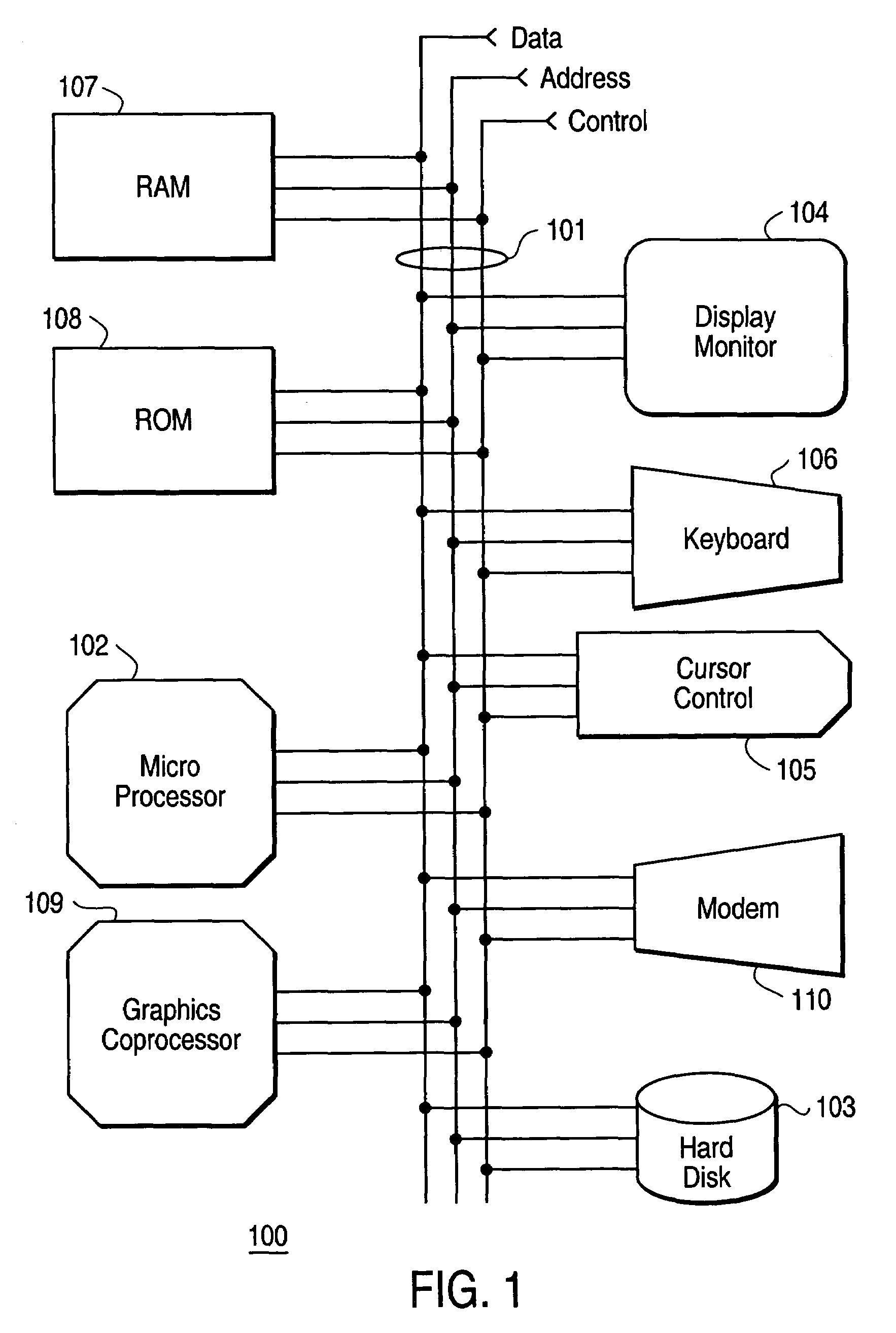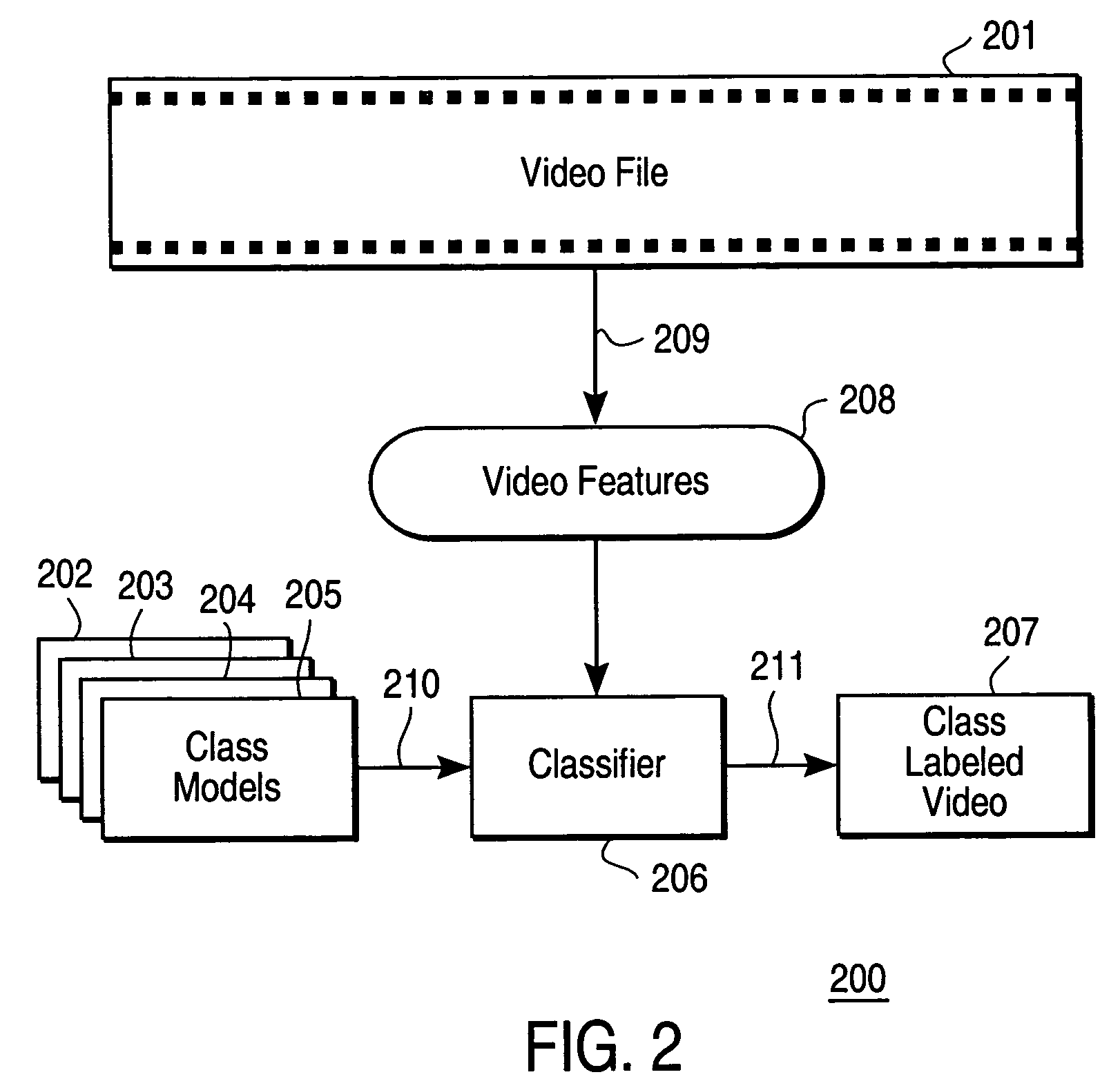Methods and apparatuses for interactive similarity searching, retrieval and browsing of video
a similarity search and video technology, applied in the field of interactive processing video, can solve the problems of inability to find specificity, generality or speed in interactively finding similar video regions, too many false positive similarity matches, and conventional systems based on pixel-domain approaches are either too computationally demanding, so as to achieve rapid similarity calculation and find time intervals of video.
- Summary
- Abstract
- Description
- Claims
- Application Information
AI Technical Summary
Benefits of technology
Problems solved by technology
Method used
Image
Examples
Embodiment Construction
[0067]For video summarization, browsing, and retrieval it is often useful to know what kind of images comprise a given video. For example, it is useful know which shots contain close-ups of human faces to facilitate their inclusion in a summary of the video. The present invention includes methods for segmenting and classifying video sequences into a pre-defined set of classes. Examples of video classes include close-ups of people, crowd scenes, and shots of presentation material such as power point slides. The features used for classification are general, so that users can define arbitrary class types.
[0068]FIG. 1 illustrates a general purpose computer system 100 suitable for implementing the methods according to the present invention. The general purpose computer system 100 includes at least a microprocessor 102. The cursor control device 105 is implemented as a mouse, a joy stick, a series of buttons, or any other input device which allows a user to control position of a cursor or...
PUM
 Login to View More
Login to View More Abstract
Description
Claims
Application Information
 Login to View More
Login to View More - R&D
- Intellectual Property
- Life Sciences
- Materials
- Tech Scout
- Unparalleled Data Quality
- Higher Quality Content
- 60% Fewer Hallucinations
Browse by: Latest US Patents, China's latest patents, Technical Efficacy Thesaurus, Application Domain, Technology Topic, Popular Technical Reports.
© 2025 PatSnap. All rights reserved.Legal|Privacy policy|Modern Slavery Act Transparency Statement|Sitemap|About US| Contact US: help@patsnap.com



